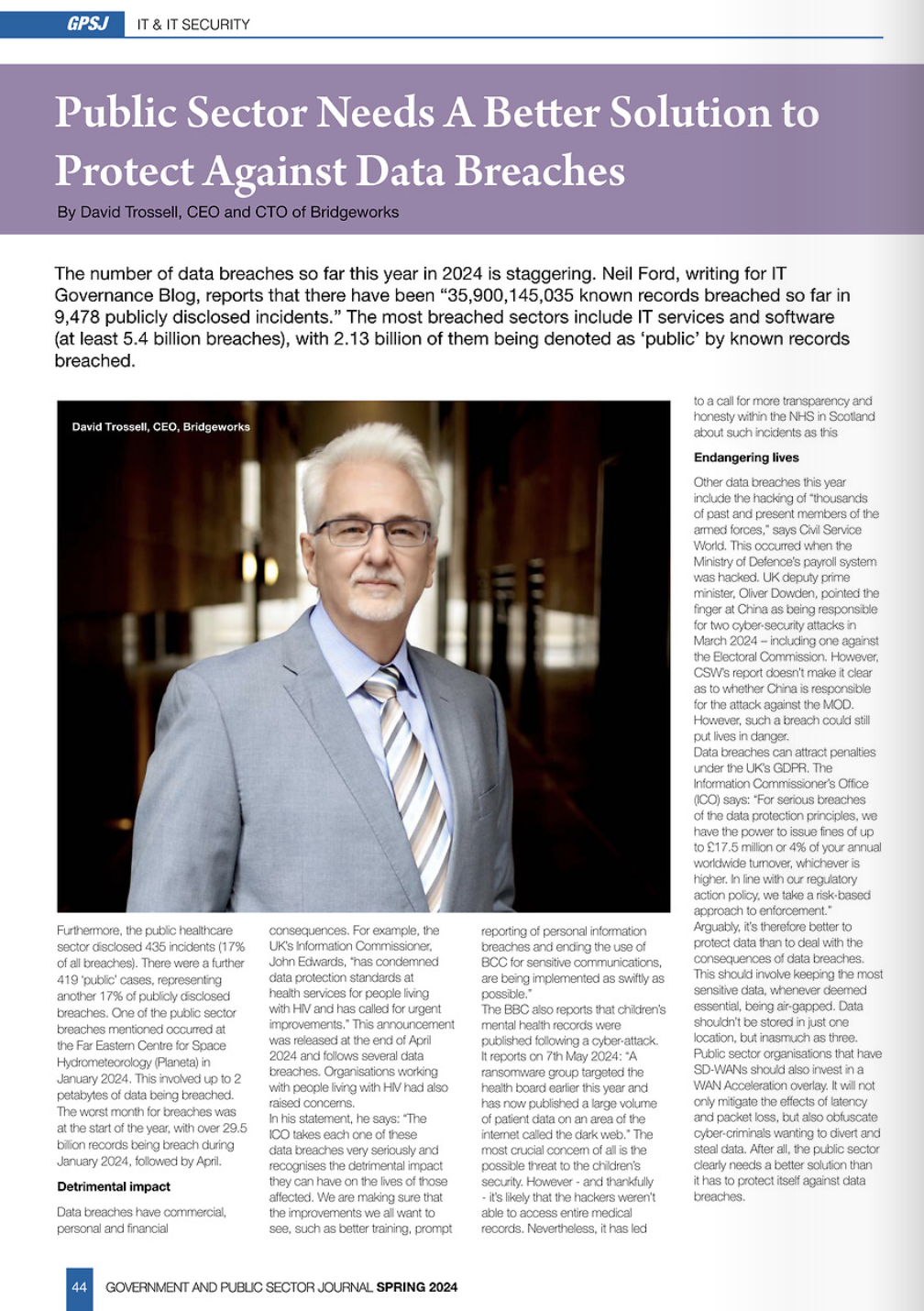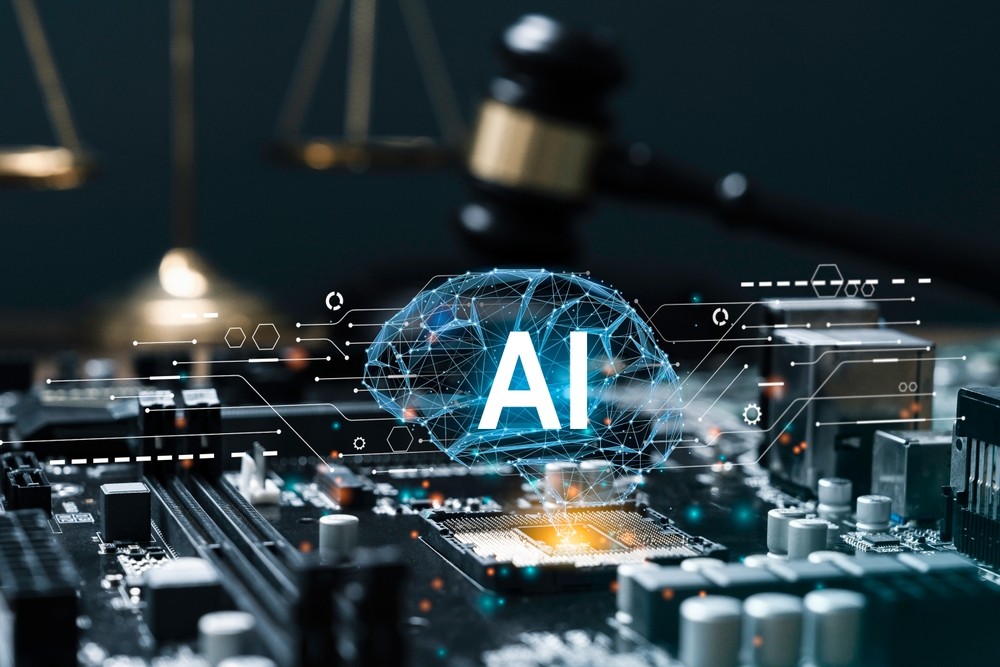David Trossell, CEO and CTO of Bridgeworks features in this article from TU-Automotive about WAN Acceleration driving autonomous data connectivity.
![]()
December 20, 2022
Over the years automotive vehicles have become increasingly connected, and so connectivity will increasingly underpin the future of the industry.
At least that’s the view that was discussed by Steve Bell, chief analyst – connectivity, Informa Tech Automotive Group at September’s WardsAuto Intelligence Outlook Conference at The Townsend Hotel, Birmingham, Michigan. It also suggests that there is an evolution in vehicle architecture, and a transition to software-defined vehicles that will depend on connectivity to ensure they are up-to-data and cyber-secure. The executive summary of his presentation adds: “The rapid evolution of BEVs means the traditional vehicle business model of profit on initial sales is being replaced by lifetime earnings that rely on over-the-air (OTA) upgrades to enhance the vehicle value to consumers.”
Bell says connectivity enables the vehicle to cloud continuum. This involves advance driver assist systems (ADAS), autonomous vehicles (AV), smart EV charging and scheduling, the software-defined vehicle (SDV), infotainment, digital cockpits, the development of the digital economy, digital dealers, digital twins and smart design, manufacturing and supply. Other aspects, beyond OTA for upgrades and upsells, are the requirements for end-to-end cyber-security, end-to-end data privacy, and the edge-to-cloud data continuum over cellular, Wi-Fi, or satellite connectivity.
He adds that connectivity powers the data and digital twin continuum from design to safe operation procedures (SOP) to end-of-line (EOL). In essence this equates to an Industry 4.0 model that creates a smart supply network. It is where smart factories leverage connectivity, intelligent autonomation, and cloud-scale data management and analytics. He says these technologies enable IT-OT convergence to “support end-to-end digital continuity from design to operations” – a digital twin. This amounts to a digitized data continuum involving the supply network, factory, engineering, and then you have sensors in everything, networks everywhere and everything is analyzed.
Hinging on IoT
Trevor Neumann, general manager and vice-president, automotive and transportation at Jabil thinks automotive connectivity is mission critical because it hinges on the internet of things (IoT). Even home appliances have changed with the advent of the smartphone, which is now having an impact on cars and on telecommunications. He comments: “The mobility experience is changing from a means of transportation to a connected experience that is consistent with our ever-changing digital lives. The consumer expects more and more. So, anything that is electronic – needs to be connected.”
Consumers want a dynamic experience that’s fresh and so they expect it to stretch to their cars from a functionality perspective, such as maps, routing, media, and software updates. “Having a connected car becomes mandatory for the vehicle to evolve in the future,” he suggests before adding that vehicles need to be design differently from how they were in the past because the transition is edging from being mechanical vehicles to ones that are software-define with “central compute units, where software and hardware are being developed separately for the car,” he explains.
He says this means that today’s EV could have 150 million lines of code over their ECUs as well as the array of sensors, cameras, LiDAR, as well as radar. In essence vehicles are becoming a computer on wheels, and one that consumers expect to be connected. This is being driven by smartphones, and Neumann believes it is being enabled by them using Apple CarPlay or Android Auto. This makes over-the-air updates critical to ensure that the vehicle remains updated, while providing the opportunity to make changes to the car rather than having to bring the vehicle to a dealership to make software updates.
He explains: “IoT and its relation to mobility, V2X, or vehicle to everything becomes key. This is connectivity from vehicle-to-vehicle, vehicle-to-home, vehicle-to-infrastructure, and so on. We are now able to introduce multiple services and experiences that otherwise weren’t available before with the connected car. They could be as simple as finding an available parking spot in a city, locating an electric vehicle charging station, or identifying a road hazard of which you would otherwise be unaware.”
Improving profit margins
David Trossell, CEO and CTO of Bridgeworks points out that manufacturers need connectivity to improve their profit margins as they only make 5% profit on their cars. “That’s the one-time-profit opportunity apart from the highly inflated prices of spare parts, so maintaining a margin is difficult,” he remarks. Subsequently, the connected and autonomous vehicle is being seen as a revenue stream.
The trouble is there are insufficient conversations about who’s going to pay for the infrastructure for over-the-air services such as navigation, media, and entertainment as well as maintenance. He therefore asks: Will it be the user? That’s not the view of customers who think it will be paid for by the manufacturers, while the manufacturers believe customers will pay for it all.
There is also the question about whether people are going to pay for subscription services in their vehicles when they often have access to free-to-air radio. With the cost-of-living crisis in full play, he suggests that people are cutting back – raising the possibility that the subscription model won’t hold up.
Expanding use cases
However, Bell is more optimistic: “When combined with cloud and edge compute and the increasing use of artificial intelligence and machine learning, the potential applications and use cases expand significantly. These include the vehicle for safety applications including C-V2X, navigation, parking, EV charging and other vehicle commerce as well as XR entertainment.”
He adds: “The degree of electronics and software on vehicle has been accelerating rapidly as engine, safety, navigation systems become more sophisticated and the sensors they rely on are fused together to deliver enhance services and capabilities. Connectivity within the vehicle is being upgraded to allow faster transfer of vast amounts of data across a network of control units and increasingly high-performance computer systems.
“Ensuring these control units and HPC systems have the latest software when they leave the factory requires a high-speed wireless network to deliver OTA software downloads. Ensuring this software remains up to date, compliant and cyber secure means that cellular OTA is required to meet the UNECE regulations.”
Enhancing safety
In terms of whether connectivity has become mission critical, he suggest that safety is enhanced by the network effect of having V2V and V2I connectivity. Cellular V2V is enabling cars to become an active swarm via a mesh network, or via a networked piece of infrastructure. This permits vulnerable road users and pedestrians to be forewarned of danger through the alerts on their smartphones to ensure they remain safe.
With regard to enterprise connectivity, he comments that it “enables safety, and that it is central to their ability to remain compliant to UNECE software requirements. It provides the means to deliver enhanced features and experiences as well as the ability to connect with the customer over the lifetime of the vehicle”.
Addressing cyber-security
Safety isn’t just about warning of objects or incidents ahead of a pedestrian or a diver. Cyber-security is about safety too. Neumann agrees that it’s critical to the overall evaluation of a software-defined vehicle as connectivity provides both risk and opportunity. It’s a risk because it creates a portal to the car, and yet there are significant commercial opportunities that can be realized via over-the-air updates. They can ensure that cyber-security is maintained as it is an ever-evolving challenge.
He explains: “We have the responsibility to keep the consumer safe and we need to execute this task with the methods and tools available. This includes sharing data, information, and risks within the automotive industry. We need standards. This topic is too important for automakers to take on individually. We must solve this at an industry level with the goal of security and safety in mind.
“One key aspect of the relationship connectivity has with vehicle safety is that new automaker revenue streams, and overall performance, are tied closely to data access. This includes frequency and content. The richness of data acquisition, storage, access, and management will have a direct impact on the value delivered for improved quality, performance, and feature functionality.”
Mission criticality
He concludes that there is a need for a high level of understanding with the customer and regulators to manage customer and vehicle privacy. Automakers also need to have the ability through data analysis to understand which features and functionalities are being used. This requires data access as it can bring significant value to automaker’s ability to create future product roadmaps. This can also enable them to address quality issues before they occur, and he thinks that connectivity can be a key pipe to better manage preventative vehicle safety instead of responsive vehicle safety. Automotive connectivity is therefore highly mission critical to the future development of connected vehicles.




